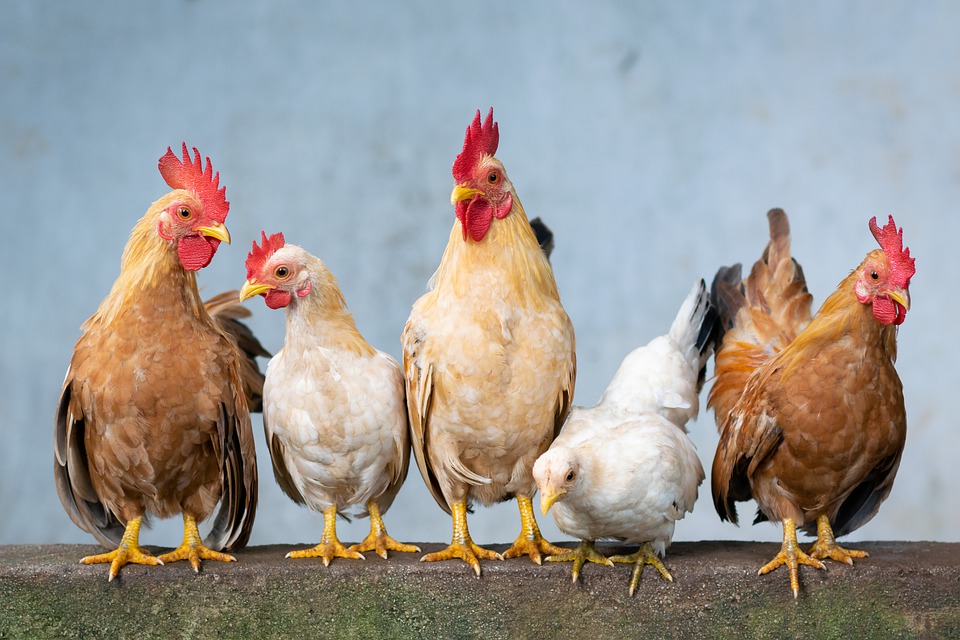USDA has announced plans for significant investments to expand processing capacity and increase competition in meat and poultry processing to make agricultural markets more accessible, fair, competitive, and resilient for American farmers and ranchers.
This is one of several key steps that USDA will take to increase competition in agricultural markets, so farmers, ranchers, farmworkers and consumers all get a fair shake.
Specifically, USDA announced its intent to invest $500 million in American Rescue Plan funds to expand meat and poultry processing capacity so that farmers, ranchers, and consumers have more choices in the marketplace. USDA also announced more than $150 million for existing small and very small processing facilities to help them weather COVID, compete in the marketplace and get the support they need to reach more customers.
USDA is also holding meatpackers accountable by revitalizing the Packers and Stockyards Act, issuing new rules on “Product of USA” labels, and developing plans to expand farmers’ access to new markets.
“The COVID-19 pandemic led to massive disruption for growers, food workers, and consumers alike. It exposed a food system that was rigid, consolidated, and fragile. Meanwhile, those growing, processing and preparing our food are earning less each year in a system that rewards size over all else,” said Agriculture Secretary Tom Vilsack. “To shift the balance of power back to the people, USDA will invest in building more, better, and fairer markets for producers and consumers alike. The investments USDA will make in expanding meat and poultry capacity, along with restoration of the Packers and Stockyards Act, will begin to level the playing field for farmers and ranchers.”
Market Concentration in Agriculture
As key agricultural markets have become more concentrated and less competitive, farmers and ranchers are getting squeezed from both sides. Markets for farm inputs—like seeds and fertilizer—are now dominated by just a few companies. Meanwhile, farmers and ranchers have fewer and fewer options for selling their products. The result is that often family farmers and ranchers are getting less, consumers are paying more, and those in the middle are taking the difference.
Dominant companies can use their power to engage in abusive practices and make it harder for farmers, ranchers, and consumers to get a fair price. Farmers’ share of every dollar spent on food has declined consistently from 35 cents in the 1970s to around just 14 cents in recent years.
Concentration in food processing has contributed to bottlenecks in America’s food supply chain, too. Just a few meatpackers, with a few large processing facilities, process most of the livestock that farmers and ranchers raise into the meat that we buy. For example, just four large meat-packing companies control over 80 percent of the beef market alone.
One of the lessons from the COVID-19 pandemic is that this system is too rigid and too fragile. When COVID slowed or shuttered meat processing, many farmers had no place to go. Farmers were forced to depopulate their animals, while grocery store shelves went bare and demand for food assistance spiked. These vulnerabilities are not new. And, given current concerns about climate and cybersecurity, these risks are likely to grow even more sharply in the future.
USDA announced the following initiatives to increase competition in agricultural markets, and build more resilience supply chains:
Investing More Than $500 million to Increase Competition and Capacity in the Meat and Poultry Processing Markets.
- USDA will commit $500 million of USDA’s Build Back Better Initiative funds through the American Rescue Plan to support new competitive entrants in meat and poultry processing. USDA will provide grants, loans, and technical assistance to address concentration within the meat and poultry sectors and relieve supply chain bottlenecks by supporting new meat and poultry processing facilities. These facilities will create competitive opportunities for producers in local and regional food systems so that farmers and ranchers have access to better choices and fairer prices. USDA has issued a Request for Information (RFI) to solicit public input into its strategy to improve meat and poultry processing infrastructure and will hold targeted stakeholder meetings and other public engagement to better understand the needs, gaps, and barriers to fair and competitive meat processing markets.
- USDA will invest more than $55 million in strengthening existing small and very small meat processing capacity, benefitting smaller producers and processing plants. USDA has made $55.2 million available for Meat and Poultry Inspection Readiness Grants to support expanded meat and poultry slaughter and processing capacity and efficiency while maintaining strong inspection and food safety standards.
- USDA will dedicate $100 million to help small and very small processing plants weather the volatility and unexpected costs that COVID imposed. With American Rescue Plan funds, USDA will provide $100 million to reduce the financial burden of overtime inspection fees for small and very small poultry, meat and egg processing plants, which provide farmers with local alternatives and greater capacity to process livestock.
Leveling the Playing Field for Independent Family Farmers and Ranchers
- USDA will revitalize the Packers and Stockyards Act to fight unfair practices and rebuild a competitive marketplace. The Packers and Stockyards Act was designed to ensure a fair and competitive marketplace and protect farmers against abuse at the hands of large businesses in the livestock and poultry industry. But the previous administration systematically weakened the law’s scope. To facilitate effective enforcement of the Act, USDA will be conducting three rulemakings.
- First, the rulemakings will clarify the conduct that USDA considers a violation of the Packers and Stockyards Act, including conduct that is unfair, deceptive, or unjustly discriminatory against farmers and growers. Second, they will address oppressive practices in chicken processing. Third, the rulemakings will reinforce the longstanding USDA position that it is not necessary to demonstrate harm or likely harm to competition in order to establish a violation of the Act.
- USDA will develop a plan to increase farmers’ and ranchers’ access to new markets, and promote their ability to receive a fair return. As per the President’s Executive Order on promoting competition, USDA will develop a plan to increase opportunities for farmers to access markets, including by supporting value-added markets and local and regional food distribution systems. USDA will also analyze and recommend policies to address the impacts of concentration in seeds and in the retail sector on family farmers, and propose strategies to enhance transparency and accountability in key markets. Together, these initiatives will give farmers more choices on how they buy and sell so that they aren’t at the mercy of a handful of dominant processors and distributors.
- USDA will issue new rules on labeling so that domestic farmers and ranchers don’t have to compete with foreign companies that mislead consumers. On July 1st, USDA announced intent to conduct a top-to-bottom review of the “Product of USA” meat labeling term..
 Benefits.com Advisors
Benefits.com Advisors
With expertise spanning local, state, and federal benefit programs, our team is dedicated to guiding individuals towards the perfect program tailored to their unique circumstances.
Rise to the top with Peak Benefits!
Join our Peak Benefits Newsletter for the latest news, resources, and offers on all things government benefits.


















